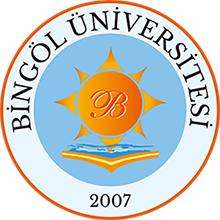HAġĠYETÜ MOLLA MUHAMMED EL-GERDÎ ALA’L ENVAR MĠN KĠTABĠ’L-VAKFĠ ĠLA NĠHAYETĠ KĠTABĠ KASMĠ’L FEYĠ VE’L GANĠME: DĠRASE VE TAHKĠK
Abstract
Bizi yaratan, İslam‟a hidayet eden, yolumuzu ilim ve irfanla aydınlatan Allah‟a zatına yakışır bir şekilde hamd olsun. Salât ve selam, seçilen peygamberimiz, efendimiz ve dostumuz Hz. Muhammed, onun âl ve ashabı ile kıyamet gününe kadar onlara iyi bir şekilde tabi olanların üzerinde olsun. İslam fıkhı ve İslam kültürüne ait her hangi bir mahtûtu tahkik etmenin önemi kimseye meçhul değildir. Bize intikal eden mahtût miras, büyük bir mirastır. Bütün ilim dallarında mahtûtların insan medeniyetindeki büyük ağırlığı vardır. Saygı ve takdiri hak eden ümmetler, miras ve ilimlerini koruyanlardır. Bununla birlikte miras, geleceğin inşasında birçok fayda sunmaktadır.
Tezimiz, genelde İslam fıkhı özelde ise Şafiî fıkhında yazılmış İslâmî bir mahtût eseri ele almaktadır. O da Yusuf el-Erdebîlî‟ye ait “el-Envâr lî a‟mâli‟l-ebrâr” isimli kitabın şerhidir. Çünkü bu kitabı Kürt âlim Molâ Muhammed el-Gerdî şerh etmiş ve “Hâşiyetü Molâ Muhammed el-Gerdî „alâ‟l-envâr”” olarak isimlendirmiştir.
Bu kitaptan bana ayrılan ve tahkik etmeye çalıştığımız kısım, “vakf”, “hibe”, “lükata”, “lâkît”, “fey” ve “ganimet” kısımlarını kapsamaktadır. Mütevazı çalışmamız, İslam hukuku ve usûlünde yüksek lisans diplomasını almak amacıyla Bingöl Üniversitesi Sosyal Bilimler Enstitüsü Temel İslam Bilimleri Bölümü İslam Hukuku anabilim dalına sunulmuştur.
Çalışmamız, doğası gereği giriş, inceleme ve tahkik olmak üzere iki bölüm, sonuç ve kaynakçaya ayrılmıştır. Önsöz, kitabın metodu, bu konuyu seçmenin nedeni ve önemi, kitapla ilgili yapılan çalışmaları ve son olarak da tezin metodunu içermektedir. Birinci bölüm inceleme olup iki kısımdan oluşmaktadır. Birincisinde yazarın hayatı, eserleri, söz konusu eserde izlediği metodoloji ve eserin kaynaklarından bir nebze söz ettik. İkinci kısımda ise tahkikte yapacaklarımı, kitabın ismi, müellife nispeti ve mahtûtun vasıflarını zikrettik. İkinci bölüm ise tahkik edilmiş metinden oluşmaktadır. “Vakf”, “hibe”, “lükta”, “lâkît”, “fey” ve “ganimet” kısımlarını kapsamaktadır. Şarih, Envâr şerhini bölüm ve kısımlara ayırmamaktadır. Bu nedenle biz de asıl metin olan Envâr‟ı esas alarak çalışmamızı kısımlara ayırmaya çalıştık.
Eserin metnini iyice kavradık. Mahtûtun ikinci nüshasını da elde ettik. Her iki nüshayı karşılaştırdık. Aralarında farklar oldukça azdır. Başka bir nüsha daha bulmaya çalıştık ancak elde edemedik. Asıl nüshayı ana nüsha olarak isimlendirerek dipnotta “ أ” harfi ile simgeledik. İkinci nüshayı ise “د” harfi ile simgeledik. Ayrıca iki nüshada yer alan bütün ayetlerin yerlerini, hadis ve âlimlerin sözlerinin kaynaklarını gösterdik. Geçen isimlerin biyografisini verdik. Her iki nüsha arasında karşılaştırma yaptık.
Sonuç kısmında ise çalışmamızda ulaştığımız önemli bazı sonuçları verdik. Praise God, who created us, guided Islam, and enlightened our way through knowledge and wisdom, in a manner worthy of His own. Salat and greetings, our chosen Prophet, our master and our friend Hz. Muhammad, and His family and friends and those who are well under their authority until the Day of Resurrection. The prominence of analyzing Islamic jurisprudence and culture is not lost on anyone. The written inheritance that is passed on to us is a great heritage. All branches of science contain the great weight of human civilization. The communities who deserve respect and appraisal are those who protect heritage and knowledge. Heritage, however, offers several advantages in building the future.
Our thesis tackles with the Islamic jurisprudence in general, and an Islamic written work on Islamic law in particular. This is the annotation of Yusuf al-Erdebîlî's book "al-Anwar al-a'mâli'l-envâr". This book was annotated by the Kurdish scholar Molâ Muhammad el-Gerdî and was called " Hâşiyetü Molâ Muhammed el-Gerdî „alâ‟l-envâr”".
The part of this book that was assigned to me and we tried to analyze included the sections of "vakf", "hibe", "lükta", "lâkît", "fey" and "ganimet". Our modest study was presented to Bingöl University, Social Sciences Institute, Islamic Sciences College, Islamic Law Department as a master‟s thesis in Islamic Law and Procedures.
The thesis includes an abstract, two sections of examination and analysis, result and resources by its nature. The abstract includes the methodology of the book, the reason and the significance of this topic, the studies conducted on the book, and finally the methodology of the thesis. The first section is the examination and consists of two parts. In the first, we discussed the author's life, his works, the methodology and resources of his work. In the second part, we discussed the method of the analysis, the name of the book, relevance and the qualifications of the author. The second part includes the analyzed text. It includes the sections of “Vakf”, “hibe”, “lükta”, “lâkît”, “fey” ve “ganimet”. The commentator did not divide the comments on Envar into sections or parts and followed the original sections of the book.
In the study, we thoroughly comprehended the text in the work. We have obtained the second copy of the manuscript as well. There were only minor differences between the two manuscripts. We attempted to recover another manuscript, but we could not. We named the original manuscript as the main manuscript and denoted it with the letter “ أ”. The second manuscript was denoted with a “د”. We also mentioned the locations of all the verses in the two manuscripts, and mentioned the resources of the hadith and words of scholars. We conducted a comparison of the two manuscripts.
In the conclusion section, we presented the most important findings that I achieved in my study.
Collections
- Temel İslam Bilimleri [162]

DSpace@BİNGÖL by Bingöl University Institutional Repository is licensed under a Creative Commons Attribution-NonCommercial-NoDerivs 4.0 Unported License..













